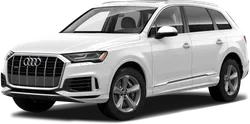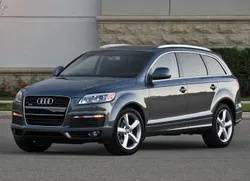

Audi Q7 Generation - 1.4L Facelift 2009
Explore the Audi Q7, a 1.4L facelift from 2009, known for its luxury and performance. Discover how this generation redefined style and capability in Portugal.
The Audi Q7 has garnered significant acclaim since its release, but the first generation, specifically the facelift model from 2009, marked a pivotal moment in its evolution. This generation of the Q7, ...
Technical Specifications
Select Version
Dimensions
Engine
Driving
Others
History and Features
Mycarro AI
Apr 26, 2025
The Audi Q7 has garnered significant acclaim since its release, but the first generation, specifically the facelift model from 2009, marked a pivotal moment in its evolution. This generation of the Q7, known internally as the 4L, was first launched in 2006 and underwent a significant facelift in 2009 to further refine its aesthetics, technology, and overall driving experience. This article will delve into the features, design changes, performance updates, and technological advancements present in the 2009 facelift version of the Audi Q7.
Design and Exterior Features
One of the first things to notice about the 2009 facelift is the noticeable enhancements in design. Audi opted for a more aggressive front fascia that included a new grille design and updated headlight assemblies featuring the brand’s signature LED daytime running lights. These stylistic changes not only gave the Q7 a more contemporary look but also helped emphasize its bold SUV stance. The rear also received subtle modifications, including redesigned taillights and a revamped bumper that contributed to a more aerodynamic profile.
Furthermore, the new package of alloy wheels introduced in 2009 offered enhanced options for buyers, with sizes ranging widely to cater to different tastes. These changes together solidified the vehicle's road presence and luxury appeal, firmly positioning it as a leading choice among luxury SUVs.
Interior and Comfort
Inside the Audi Q7, the 2009 facelift brought an upgraded cabin that underscores Audi's commitment to luxury and craftsmanship. Premium materials, such as leather and real wood trim, created an inviting atmosphere for both the driver and passengers. The layout was intuitive, with controls easily accessible and well-placed to enhance overall ergonomics.
One significant upgrade was the introduction of Audi's Multi Media Interface (MMI) system, which streamlined navigation, audio, and vehicle settings into one easy-to-use display. The integration of technology, particularly the updated infotainment system, made the driving experience more engaging and enjoyable. The spacious interior allowed for 7-passenger seating arrangements without compromising comfort, making it an ideal choice for families.
Performance Enhancements
Under the hood, the 2009 Audi Q7 facelift brought notable performance upgrades. The vehicle was equipped with a choice of engines that balanced power and efficiency. The standard 3.6-liter V6 engine produced a robust output, while the aforementioned 4.2-liter V8 option provided thrilling acceleration and an engrossing driving experience. Both engines were mated to Audi's Quattro all-wheel-drive system, ensuring that power was distributed evenly across all four wheels, enhancing traction and stability under various road conditions.
Moreover, the addition of an adaptive air suspension system allowed drivers to adjust the vehicle’s ride height, making for a comfortable ride whether on smooth highways or rough terrains. This attention to performance and handling garnered the Q7 praise for its on-road dynamics, a hallmark of the Audi brand.
Safety and Technology Features
With the facelift in 2009, Audi also prioritized safety and advanced technology in the Q7. The model was equipped with an array of safety features, including side-curtain airbags, electronic stability control, and advanced braking systems that provided peace of mind for families and solo drivers alike.
Furthermore, the available driver assistance features presented options like adaptive cruise control and a rear-view camera, which significantly improved overall safety and driver awareness while on the road. These technological advancements showcased Audi’s dedication to providing not only luxury but also ensuring a secure driving atmosphere.
Market Reception and Legacy
Upon its release, the 2009 facelift of the Audi Q7 received positive feedback from both critics and consumers alike. It struck a commendable balance between luxury, space, and performance, making it a top contender in the premium SUV segment. Its well-rounded nature appealed to families and individuals who required versatility without sacrificing style and comfort.
Today, the first generation Audi Q7, particularly the 2009 facelift, remains a popular choice in the used luxury SUV market, attracting buyers who appreciate refined aesthetics paired with exemplary performance and practical features.
Conclusion
In conclusion, the Audi Q7 Generation 1 (4L), particularly with its 2009 facelift, stands as a testament to Audi’s craftsmanship, innovation, and attention to detail. It successfully combined luxury with functionality while ensuring excellent performance. As the automotive world continues to evolve, the Q7 remains a significant part of Audi's legacy, highlighting what it means to drive a premium SUV without compromise.
